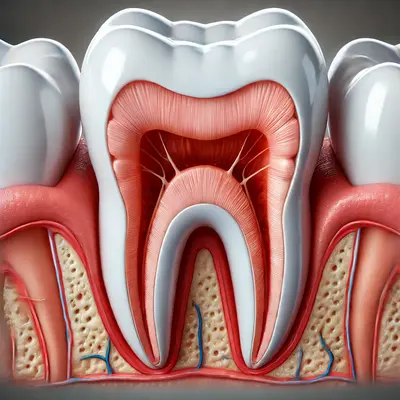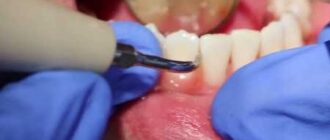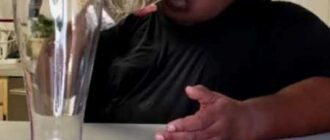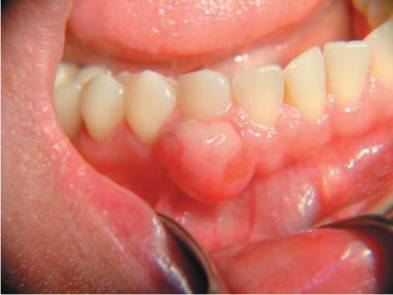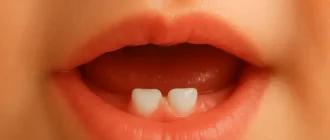Loose teeth are something you’d expect in children eagerly waiting for a visit from the tooth fairy—not adults. Yet, many adults experience this unsettling condition. A loose tooth in adulthood often signals an underlying problem, and while it may not always be a dental emergency, it should certainly be a cause for attention. In this article, we will look at the real reasons behind loose teeth, what numbers tell us, and hear the voices of experts.
How Common Is It?
While data on loose teeth specifically is limited, periodontal disease, which is often the underlying cause, affects around 47.2% of adults aged 30 and older in the United States. The National Institute of Dental and Craniofacial Research highlights that by the age of 65, nearly 70% of adults have some form of periodontal disease. Loose teeth often arise as a direct consequence of severe periodontal damage.
Interestingly, men are more likely to have severe periodontal disease than women, and smokers are three times more likely to lose their teeth compared to non-smokers. Diabetes, stress, and even genetic predisposition can make an individual more prone to experiencing loose teeth.
Common Causes of Loose Teeth in Adults
1. Gum Disease (Periodontitis)
The leading culprit behind loose teeth in adults is periodontitis, a severe gum infection that damages the soft tissue and bone supporting the teeth. Plaque buildup, if left unchecked, can harden into tartar, harboring bacteria that contribute to inflammation and bone loss. Dr. Heather McDonnell, a periodontist, notes that “by the time a tooth becomes loose due to gum disease, the underlying bone structure has already suffered significant damage.” This is a critical point to understand—loose teeth signal advanced disease.
2. Trauma and Injury
A sudden impact, such as a fall or a sports-related injury, can also lead to a loose tooth. Trauma may cause the ligament that holds the tooth in place to stretch or even tear. While this isn’t always a permanent problem, it needs attention. The American Association of Endodontists recommends seeing a dentist within 24 hours of the injury to increase the chances of saving the tooth.
3. Osteoporosis
Osteoporosis is another condition that may contribute to loose teeth, especially among older adults. Osteoporosis weakens bones throughout the body, including the jawbone, which can, in turn, loosen teeth. According to the National Osteoporosis Foundation, about 54 million Americans have osteoporosis or low bone mass. Among these individuals, jawbone deterioration is a potential risk, leading to loose teeth or tooth loss.
4. Teeth Grinding (Bruxism)
Bruxism, or teeth grinding, exerts excessive pressure on the teeth, resulting in wear, looseness, and eventual mobility. Dr. Sarah Levine, a general dentist, shares that “patients with untreated bruxism often end up experiencing loose teeth due to the constant micro-trauma that weakens the ligament and supporting bone.” If you grind your teeth at night, a custom night guard may save your teeth from becoming loose.
Signs You Shouldn’t Ignore
A loose tooth in adulthood is rarely an isolated problem. Often, it is accompanied by symptoms such as:
- Bleeding Gums: Persistent bleeding while brushing or flossing could indicate underlying gum disease.
- Receding Gums: Teeth appearing longer can signify a loss of gum tissue—a prelude to looseness.
- Chronic Bad Breath: If bacteria are allowed to flourish, they can produce a foul odor.
- Sensitivity or Pain: Loose teeth can cause discomfort when chewing, biting, or consuming hot or cold foods.
The Statistics of Tooth Loss
To understand how loose teeth can eventually lead to tooth loss, consider these statistics: 69% of adults aged 35-44 have lost at least one permanent tooth, according to the American Dental Association (ADA). Tooth loss in adulthood is often preventable, and addressing a loose tooth in time is crucial.
What You Can Do
1. Professional Evaluation and Treatment
A dental check-up is vital for diagnosing the underlying cause of a loose tooth. Treatments for periodontal disease range from scaling and root planing (a deep cleaning method) to surgery in advanced cases. For trauma-induced loose teeth, stabilization with a splint may be necessary.
2. Improved Oral Hygiene
If gum disease is to blame, maintaining excellent oral hygiene is a must. This includes brushing twice a day with a fluoride toothpaste, flossing daily, and using mouthwash. Dr. McDonnell emphasizes that “many of my patients see significant improvements just by changing their brushing techniques and tools—such as switching to an electric toothbrush.”
3. Night Guards for Bruxism
For those with bruxism, wearing a night guard can protect your teeth from the excessive forces that may lead to loosening. Custom-made guards are particularly effective, as they are tailored to fit your bite and provide maximum protection.
Our Editorial Advice: Don’t Ignore the Signs
Loose teeth in adults are a signal that something deeper is at play. Whether it’s gum disease, bruxism, or osteoporosis, catching it early can save not just your tooth, but also prevent the hefty costs associated with implants or dentures. Invest time in preventative care and see your dentist at the first sign of trouble. In the case of loose teeth, waiting often makes the problem worse—both in severity and in cost. Your smile, after all, is worth it.
Take care of your oral health now, and your teeth will thank you later!
